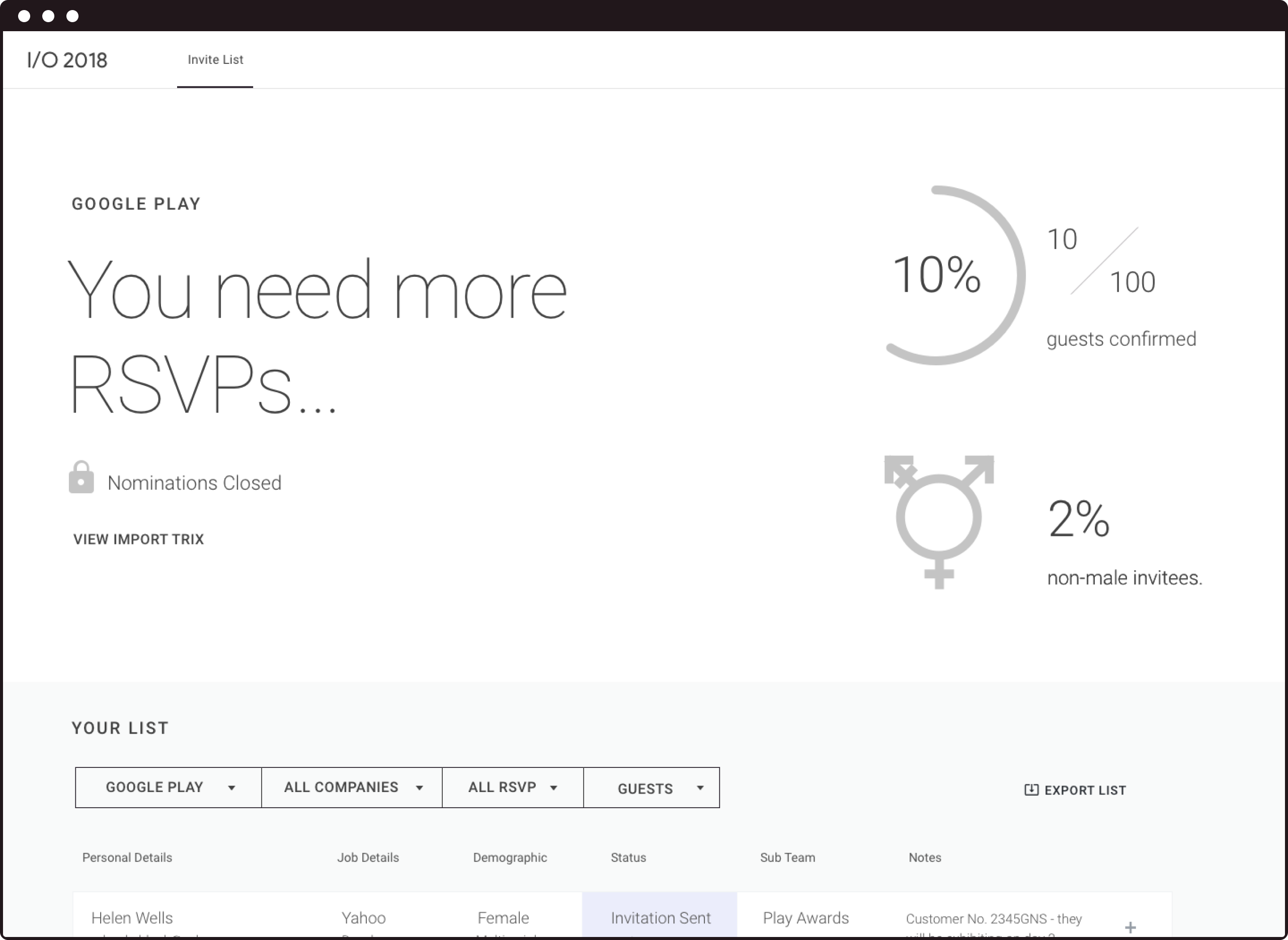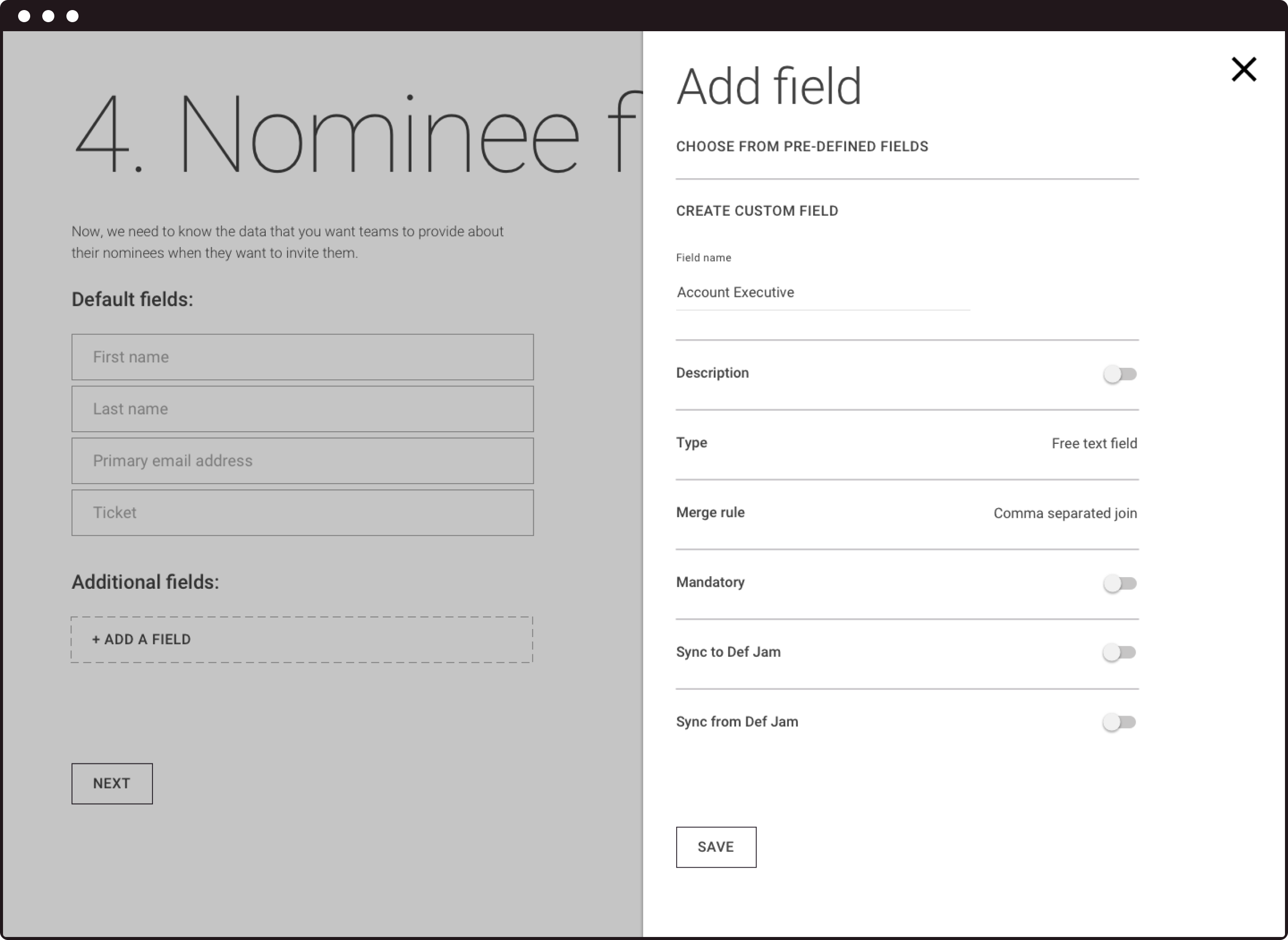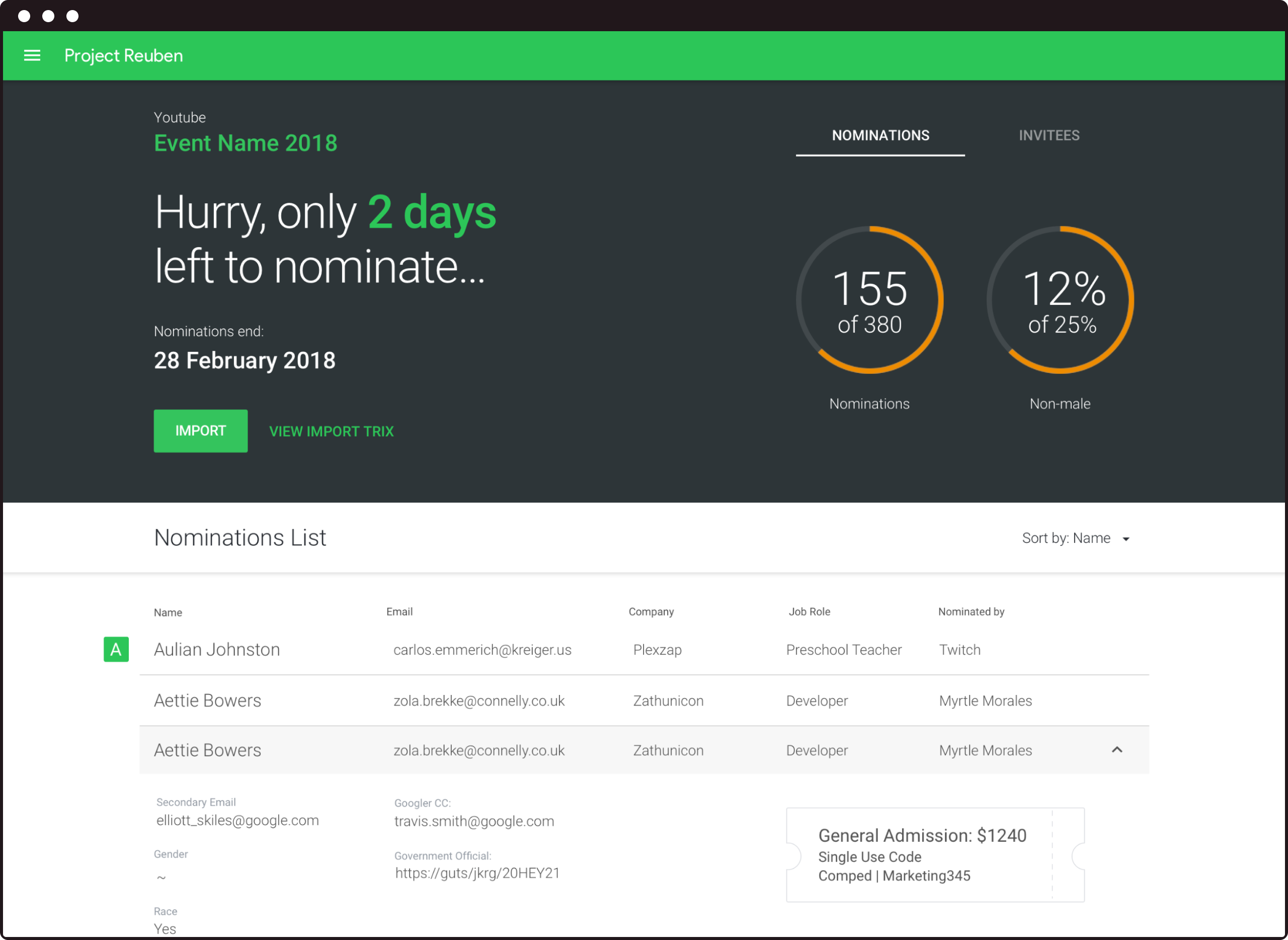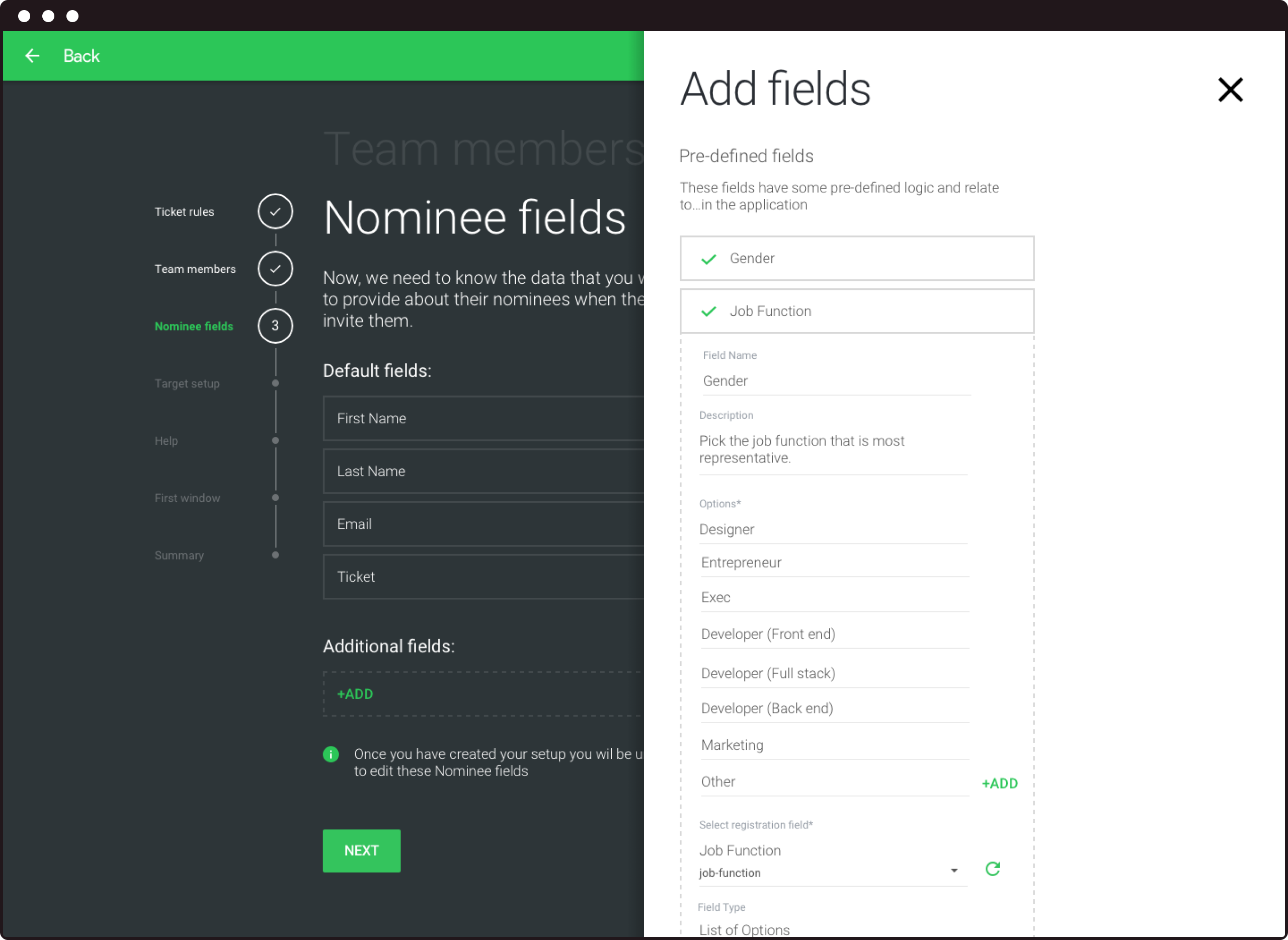To build an app that would save Google $100Ks within a tight deadline, I focused stakeholders on outcomes over features, and designed hand in hand with the engineers.
Customer
Google (via Potato), Aug-Dec 2017
Team
Me, Lead designer, Tech leads, Google-side PM
Role
Product designer
Responsibilities
Product vision; UI design; UX design; User research; Stakeholder communication
Google used discounted tickets to its big events (like I/O) as a key part of its engagement strategy. Community teams at Google would each get an allocation of discounted tickets, based on the size of their audience.
For the team in charge of the events, this process was painful. They had a mountain of spreadsheets for each event, where they tried to:
The spreadsheets were time consuming, error prone, and costly.
With the best of intentions, the head of the events team and Google, had produced a 90 page specification for exactly what the product should be, and each feature it should have.
Our task: design and build it in time for the next I/0.
4 months away.
We knew that getting everything in that document built in 4 months was impossible. And possible not even desirable. Whilst we knew what the client wanted in terms of features, we had no idea what her goals were.

Me and another designer travelled to the client's offices and spent a two week sprint working side by side with her.
Our first step was to produce a project canvas that would replace the 90 page specification.

We put all the assumptions and guesses, and a lot of the client's specific asks straight into a lo-fi prototype, and travelled around Google's offices testing it with the end users.

We tested the prototype, and with the client, drew out which features users would need, and would create the outcomes we wanted.

Instead of words in a doc, we made diagrams that would be the source of truth for the engineers, the design, and the client.
In two weeks, our engineers had logic they could start building, and wireframes they could start hanging off them.
This freed me and the other designer up to run co-design sessions with the client to iterate on the initial prototype first into a new set of wireframes, and then final UI sketches.

The guest list — 2nd wireframe

The field config – 2nd wireframe

The guest list – final design

The field config – final design
We worked alongside the engineers to constantly check that we were on track to get enough of the product built to meet the agreed outcomes.
Co-designing with the client meant that we could always redirect the conversation back to the project goals and outcomes to keep the scope realistic. Stripping back the unnecessary, and earmarking things which could be pushed back to a subsequent release if needed.
Eventually, we got the product released, in 4 months, in time for I/O. It was stripped back, but functional.
Even with a stripped back project we smashed the goals of the project.
We managed to move away from something that was undeliverable, and unproven, to something that worked.
Being in-person with the client, every day, meant we created trust that allowed us to challenge assumptions and scope honestly and productively.